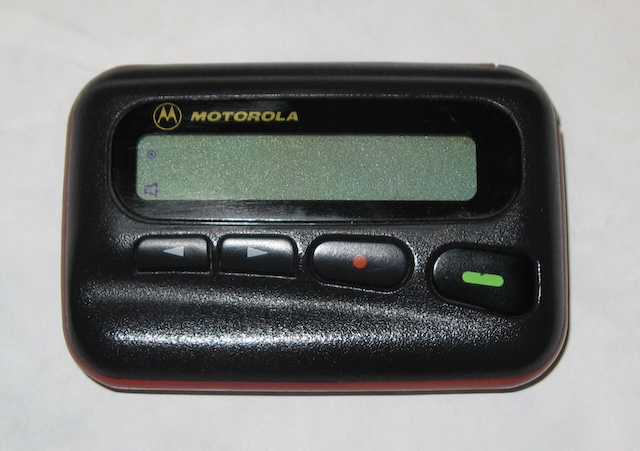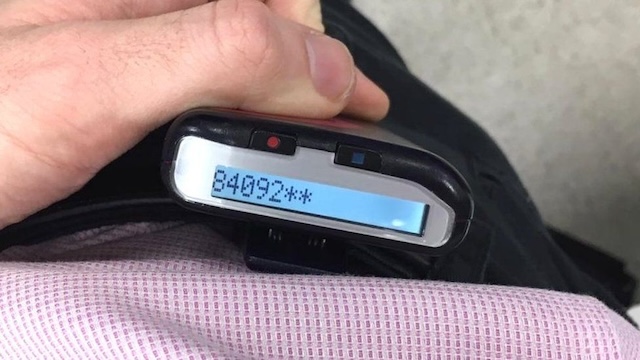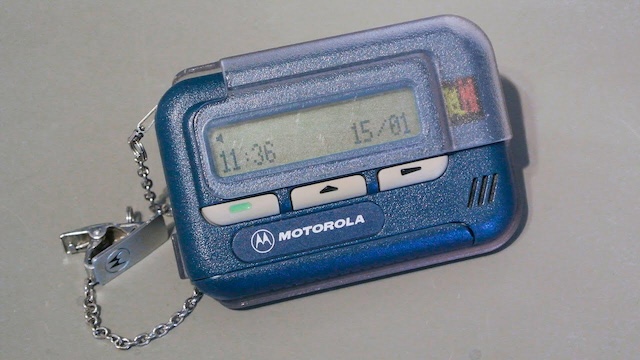Pagers, also known as beepers, were once the pinnacle of mobile communications technology. Before the advent of smartphones and instant messaging, pagers were essential for quick and reliable communication. This article takes a nostalgic look at the history of pagers, their rise, and their lasting legacy in modern times.

The Early Beginnings of Pagers
The story of the pager begins in the early 20th century. The first pager-like system was introduced by the Detroit Police Department in 1921, which successfully deployed a radio-equipped police car. This early system laid the groundwork for future developments in pager technology.
In 1949, Al Gross, a pioneer in wireless communications, invented the first telephone pager. This device, also known as a „beeper,“ could receive radio signals and alert the user with a beep. While this device was still relatively simple, it marked the beginning of a new era in communication, paving the way for future advancements in mobile technology.

The Advent of Pagers in the 1980s and 1990s
The 1980s and 1990s were the golden age of pagers. During this period, pagers became widely popular among professionals and the general public. The ability to receive messages on the go was revolutionary, and pagers quickly became an essential tool for doctors, first responders, and business professionals.
With the development of alphanumeric displays, pagers evolved from simple beepers to devices capable of receiving more complex messages. Companies like Motorola and NEC dominated the pager market, offering various models that could display short text messages, and even support two-way communication, which allowed users to reply to messages. This development made pagers more versatile and solidified their place as a critical communication tool during these decades.
The Decline of the Pager
With the advent of cell phones in the late 1990s and early 2000s, the popularity of pagers began to decline. Cell phones offered more advanced features, including voice calls, text messaging, and internet access, making pagers seem obsolete. The increasing ubiquity and affordability of mobile phones led to a rapid transition away from pagers.
By the mid-2000s, pagers had largely been replaced by smartphones, which provided a more comprehensive communication solution. Not only could people make voice calls and send text messages, but they could also access email, browse the internet, and use apps for a range of activities. As a result, pagers faded into obscurity, replaced by the all-in-one devices that we now rely on daily.

Pagers in Modern Times
Although their popularity has waned, pagers have not completely disappeared. In certain industries, especially healthcare, pagers still play an important role. Hospitals and emergency services continue to rely on pagers for their reliability and ability to operate during network outages or in areas with limited mobile phone signal.
Modern pagers have evolved to include more advanced features. Many now come with encryption, ensuring that sensitive information, such as patient data, remains protected. This has made them particularly valuable in healthcare, where confidentiality and reliability are paramount. Despite the rise of smartphones and more advanced technologies, pagers continue to serve a niche role where their specific benefits are still needed.

Legacy of Pagers
The history of pagers is a testament to the rapid evolution of communication technology. From their early days in the 1920s to their peak in the 1980s and 1990s, pagers have left an indelible mark on the way we communicate. While they may no longer be a common sight, their legacy lives on in the devices we use today.
Looking back at the history of pagers, we can appreciate the role they have played in shaping modern communication. The advent of pagers provided people with the first glimpse into mobile, on-the-go communication, long before smartphones made instant communication the norm. Pagers were an important step forward in communication technology, setting the stage for the development of more advanced mobile devices.
While they may not be as prevalent in our daily lives anymore, pagers continue to be a nostalgic reminder of a time when communication was simpler but still incredibly revolutionary. Their lasting legacy is not just in the way we communicate but also in how communication technology has evolved to bring us closer, faster, and more efficiently.
Conclusion
Pagers were once the cutting edge of communication technology, playing a vital role in connecting people before the age of smartphones. They provided convenience and reliability, particularly for professionals in fields such as healthcare and business. Despite being largely replaced by cell phones and smartphones, pagers continue to serve a niche role in certain industries where reliability and simplicity are essential.
As we reflect on the history of pagers, we can appreciate the role they played in shaping the way we communicate today. Their legacy lives on, not just in the devices we use, but in the rapid technological advancements that have followed in their wake. Pagers may have been replaced by more modern gadgets, but they were a significant stepping stone in the evolution of mobile communication.


